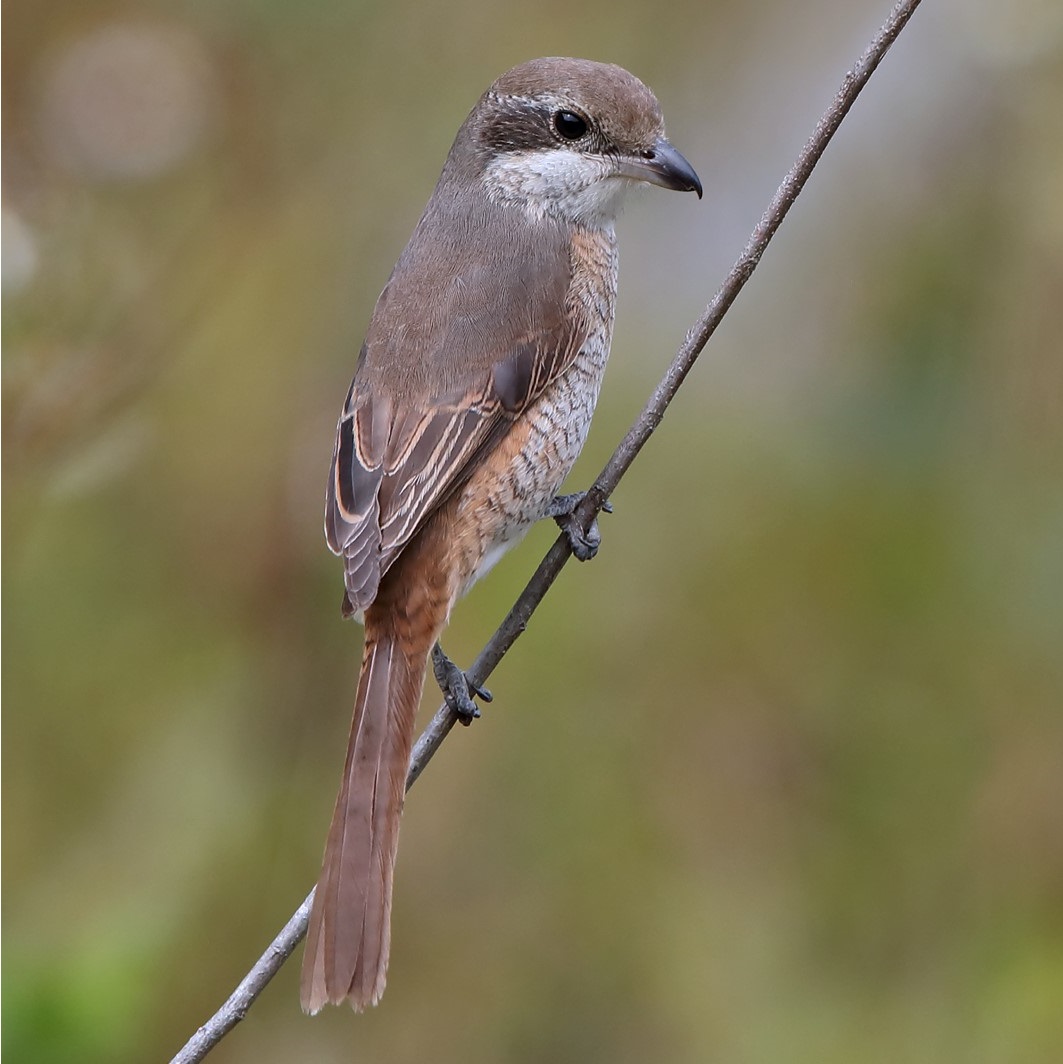Grey-backed Shrike Lanius tephronotus 灰背伯勞
Category I. Accidental.
IDENTIFICATION

Dec. 2020, Michelle and Peter Wong.
21-23 cm. Size and structure similar to Long-tailed Shrike, though some birds may be smaller.
Young birds early in their first winter have dull greyish brown upperparts, a poorly-marked mask not visible above the bill, extensive dark chevrons on underparts and uppertail coverts, the latter being warm brown, and extensive pale base to lower mandible. Retained juvenile greater coverts and tertials are distinguished by the dark subterminal fringe.

Mar. 2021, Michelle and Peter Wong.
The same bird later in the winter has a blackish mask that extends over the bill base, upperparts more strongly tinged grey (though not as grey as adults) and underpart chevrons reduced in area; some of the juvenile greater coverts and tertials have been replaced.
Compared to Long-tailed Shrike, adults have uniform dark grey crown to back and narrow black band over bill.
VOCALISATIONS
Very similar to Long-tailed Shrike.
DISTRIBUTION & HABITAT PREFERENCE
Occurs in clearings amidst or near forest or shrubland.
OCCURRENCE
2004: one at Tai Po Kau on 22 April.
2014: an adult at Ng Tung Chai on 13 January.
2015: an adult at Ng Tung Chai 22 September to 14 April 2016 (presumed same individual as 2014 record) (Allcock 2017).
2020: first-winter at Lam Tsuen from 12 December to 21 March 2021.
BEHAVIOUR, FORAGING & DIET
Perches prominently searching for prey before dropping down to capture small invertebrates.
RANGE & SYSTEMATICS
Resident from Himalayan foothills east through northeast India to Myanmar, northern Indochina and Yunnan, southwest China; summer visitor to higher altitudes in Himalayas and west and southwest China (Yosef et al. 2020, Liu and Chen 2020). Two subspecies are recognised: L. t. lahulensis occurs in the west as far east as western Tibet, while the nominate form occurs to the east.
CONSERVATION STATUS
IUCN: Least Concern. Population trend stable.
Allcock, J. A. (2017). Grey-backed Shrike Lanius tephronotus at Ng Tung Chai. The first Hong Kong record accepted to Category I. Hong Kong Bird Report 2015: 277-280.
Liu, Y. and Y. H. Chen (eds) (2020). The CNG Field Guide to the Birds of China (in Chinese). Hunan Science and Technology Publication House, Changsha.
Yosef, R., ISWG International Shrike Working Group, and E. de Juana (2020). Gray-backed Shrike (Lanius tephronotus), version 1.0. In Birds of the World (J. del Hoyo, A. Elliott, J. Sargatal, D. A. Christie, and E. de Juana, Editors). Cornell Lab of Ornithology, Ithaca, NY, USA. https://doi.org/10.2173/bow.gybshr1.01.

